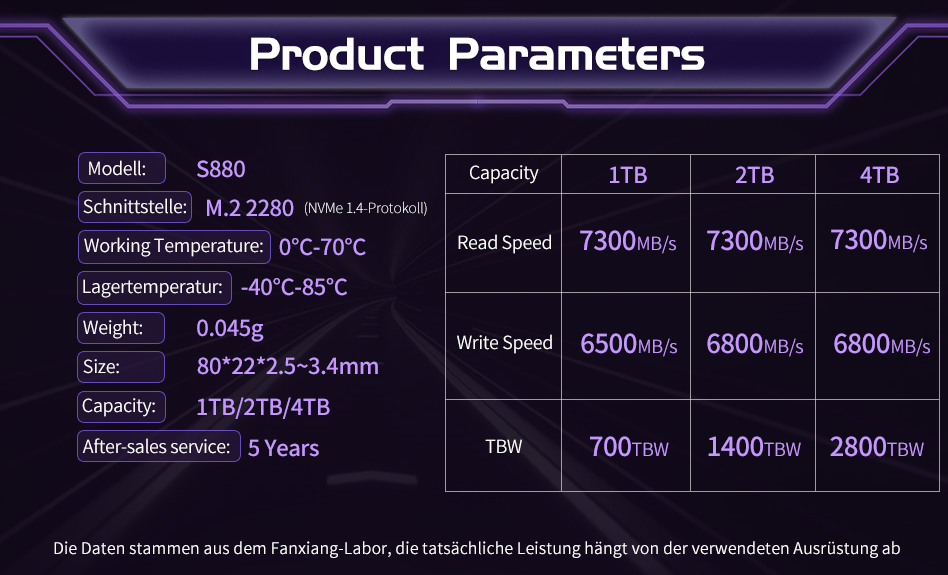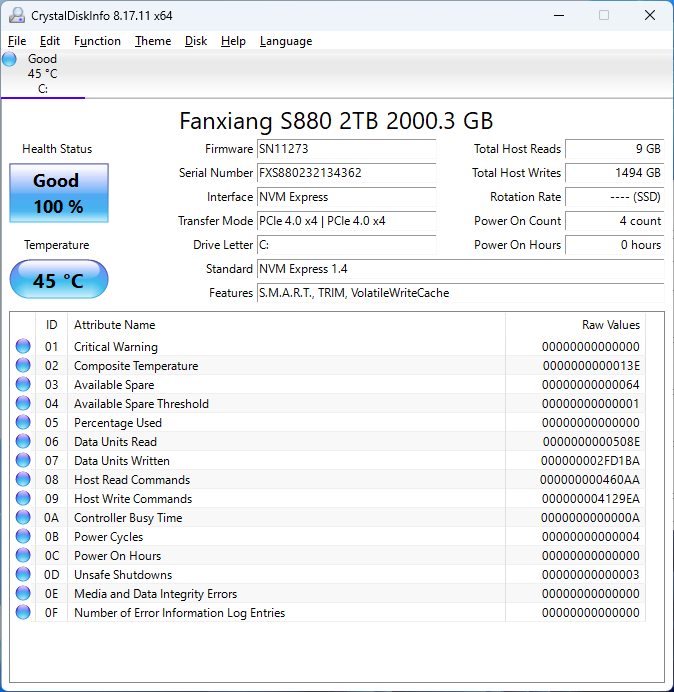Today we are looking at the Fanxiang S880 2TB SSD. This is the second Fanxiang drive that I have reviewed, after recently taking a look at their S770 drive. Until recently I had never heard of Fanxiang, until Patrick ran into a couple of their SSDs as part of his fanless firewall appliance series. The full company name is SHENZHEN FANXIANG INFORMATION TECHNOLOGY CO, LTD, and as you might gather from the name this product is made in China. Similar to the S770, we are looking at this drive because of its combination of compelling price and because it has shown up out there in the wild. We are now seeing these drives on Amazon at really solid prices for the capabilities and capacity. Also, almost nobody else is reviewing these drives so we wanted to have some coverage for the brand.
Fanxiang S880 2TB NVMe SSD
Unlike the S770, the S880 does not come with a heatsink. However, it does come with the tiny screwdriver and M.2 screw. I do not have a picture of them, but they are in the box!
As for the drive itself, the Fanxiang S880 2TB comes in a single-sided M.2 2280 (80mm) form factor.

The S880 sports a Maxio MAP1602 controller, which I have seen only once before on the Predator GM7. Per my diagnostic utilities, the NAND is YMTC 232-layer TLC. The YMTC NAND was ahead of its time when announced, so much so that the company is blacklisted by the US.
This is a DRAM-less drive, so despite a higher model number than the S770 that would generally indicate the S880 is a lower-end device.

As a single-sided drive, the back of the Fanxiang S880 has nothing but a label.
Fanxiang S880 SSD Specs
The Fanxiang S880 comes in 1TB, 2TB, and 4TB capacities.

Similar to the S770, I was unable to find this drive listed on Fanxiang’s website. As a result, this spec sheet comes from the Amazon listing.
Per the specs in the Amazon listing, the 2TB model of the S880 has identical sequential read and write performance to the S770 at 7300 MB/s and 6800 MB/s respectively. These are fairly top-tier among Gen4 SSDs, and in particular, would be very performant for a DRAM-less drive. 1400 TBW endurance is certainly respectable, and a 5-year warranty is the industry standard. Of course, I have my doubts about the warranty if I cannot even find a spec sheet for the drive, so I will take the warranty duration with a grain of salt.

CrystalDiskInfo can give us some basic information about the SSD and confirms we are operating at PCIe 4.0 x4 speeds using NVMe 1.4.
Test System Configuration
We are using the following configuration for this test:
- Motherboard: MSI MAG X670E Tomahawk
- CPU: AMD Ryzen 9 7900X (12C/24T)
- RAM: 2x 16GB DDR5-6000 UDIMMs
Our testing uses the Fanxiang S880 2TB as the boot drive for the system, installed in the M.2_1 slot on the motherboard. This slot supports up to PCIe Gen 5 x4. The drive is filled to 85% capacity with data, and then some is deleted, leaving around 60% used space on the volume.
Next, we are going to get into our performance testing.





The Lexar NM790 1/2/4TB uses the same exact NAND and controller as this does
It appears I can’t find S880 in china either. I assume it has become the S790
Somehow I couldn’t find a link to the Fanxiang S770 review in the article. Google found it.
I’m struck by the poor performance on SPECworkstation for a the drive that performs at par on CrystalDiskMark. Is it possible the firmware might have been tuned to a common synthetic benchmark? If so, it would appear application workloads are not amenable to such tuning.
When the review concludes, “If you are in the market for fast and cheap, buy an S770. If it is out of stock, you can buy the S880!” If I have a $90 budget and look at other drives in that price range in the US, I see PCIe 3 drives from Intel and Samsung as well as PCIe 4 drives branded Western Digital, Crucial Micron, PNY, MSI, Kingston and Team Group. Many of these drives are actually less than $80. How do they compare?